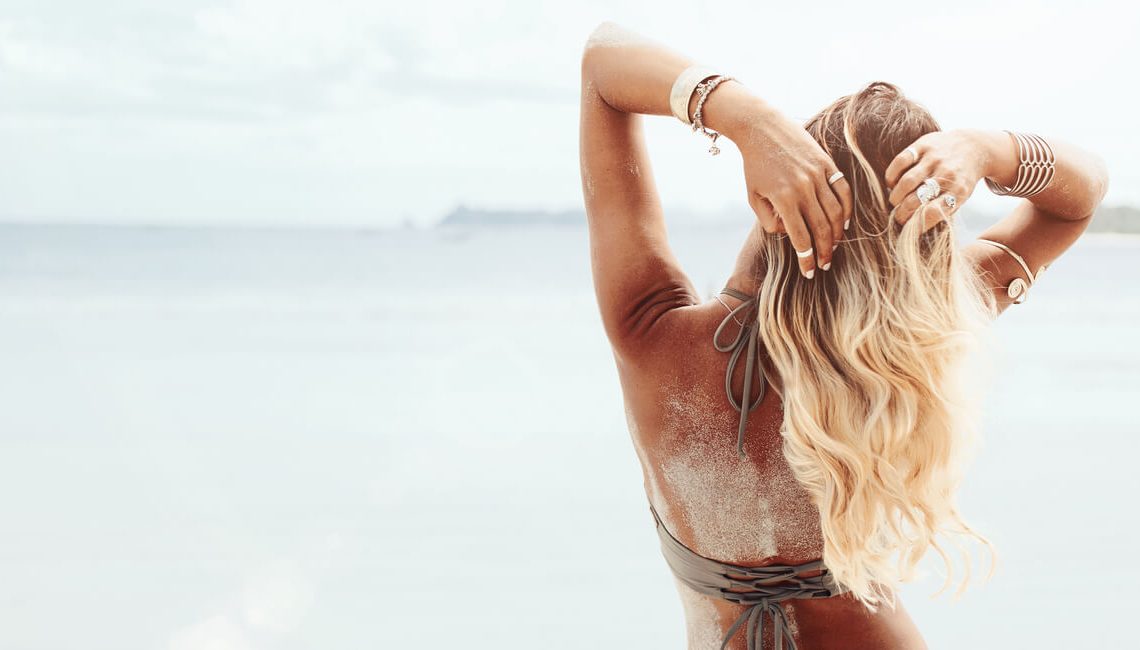
The summer holidays are back, and the problems of summer weathering with them. Is there a way to defend ourselves from all those physical and chemical aggressions that damage our hair’s structure? Here are six tips for you.
Summer’s back. Despite taking care of your hair for months, you know that its beauty will be seriously put to the test this year. But what actually makes your hair beautiful, and in particular what makes it shiny, smooth and resistant? The surface of the healthy hair shaft is like a roof on which tiles are aligned in an orderly and seamless fashion. And just as a roof with untidy tiles won’t protect against bad weather, hair with an altered surface will be more exposed to any kind of damage.
The surface of the hair is made up of flattened cells filled with keratin, a protein conferring plasticity and resistance to hair, nails and the epidermis. Solar radiation, in particular the ultraviolet component, tends to denature keratin, disrupting it and making it more permeable, causing hair to become dehydrated and making it look frizzy. The same is true for saltiness. The salt crystals resulting from the evaporation of sea water will continue to absorb water, taking it from the surfaces (hair, skin and nails) with which they are in contact.
Even hair color, whether natural or dyed, is strongly affected by external agents connected to life at the beach, mainly the sun and salt. And there is an additional pitfall for those who enjoy poolside living: chlorine. If the same agents that denaturate keratin also affect melanin (to which we owe our hair and skin’s natural color) when the hair is dyed or above all discolored, chlorine can react chemically with the pigments of the dye turn-ing blond hair to green and brown to reddish.
All these pitfalls, however, can be prevented without having to cut one’s hair before going on holiday or when one returns. The fearsome straw-hair effect can be avoided by putting into practice the following precautions:
1) Protect your head from the sun with hats that allow the skin to breathe while shading it. UV radiation in fact both damages the hair shaft and reaches the scalp, irritating the hair bulb and compromising the life cycle of the hair, which hinders its regrowth.
2) Reduce the surface of contact of the hair with the sun, sea and chlorinated water as much as possible. The hair must be protected with specific emulsions or ointments containing solar filters, capable of creating a barrier that will protect it from aggression. You can, for example, put your hair up in a bun, which will also contribute protecting the crown of the head.
3) Always rinse your hair with fresh water after bathing to protect it from the aggressions of salt and/or chlorine. If the tap water is too hard, i.e. rich in limestone, use a bottle of natural mineral water.
4) Use very delicate detergents as a shampoo, which should also be suitable for frequent washing. Also, always finish the wash with a hair mask or balm, then rinse off.
5) Obviously, try to keep your hair tied back as often as possible. Thus you will avoid subjecting it to forced drying, straighteners and curling irons, and to other physical and chemical aggressions.
6) At the end of the holidays, to give your hair back its natural beauty, it will be useful to have a professional keratin treatment done and a quick chop to shorten the ends.
Obviously the choice of products to use is very wide. The advice I can give to this regard is to prefer products based on plant extracts such as sweet almond oil, avocado, argan and ceramides. In the case of dermatitis or scalp pathologies, asking your trusted dermatologist for advice in advance will help prevent any worsening of the disease.
Article of Dr Adele Sparavigna for https://4me.styl


